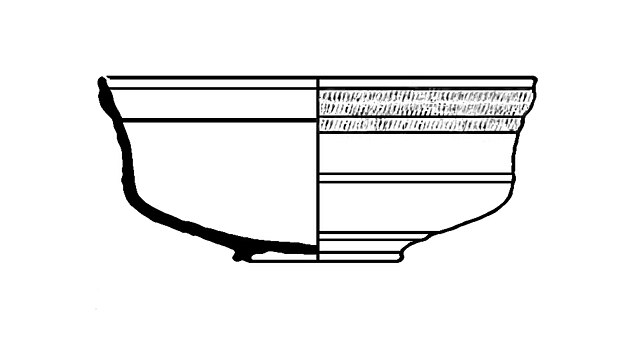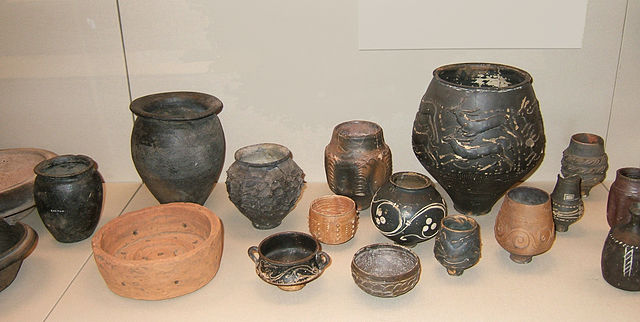Terra sigillata is a term with at least three distinct meanings: as a description of medieval medicinal earth; in archaeology, as a general term for some of the fine red Ancient Roman pottery with glossy surface slips made in specific areas of the Roman Empire; and more recently, as a description of a contemporary studio pottery technique supposedly inspired by ancient pottery. Usually roughly translated as 'sealed earth', the meaning of 'terra sigillata' is 'clay bearing little images', not 'clay with a sealed (impervious) surface'. The archaeological term is applied, however, to plain-surfaced pots as well as those decorated with figures in relief, because it does not refer to the decoration but to the makers stamp impressed in the bottom of the vessel.
Roman red gloss terra sigillata bowl with relief decoration
Terra sigillata beaker with barbotine decoration
A decorated Arretine vase (Form Dragendorff 11) found at Neuss, Germany
Profile drawing of form Dragendorff 29. 1st century AD.
Pottery was produced in enormous quantities in ancient Rome, mostly for utilitarian purposes. It is found all over the former Roman Empire and beyond. Monte Testaccio is a huge waste mound in Rome made almost entirely of broken amphorae used for transporting and storing liquids and other products – in this case probably mostly Spanish olive oil, which was landed nearby, and was the main fuel for lighting, as well as its use in the kitchen and washing in the baths.
Decorated terra sigillata bowl from Gaul (Metz in France)
Unusually ambitious Samian ware flask from Southern Gaul around 100 AD. Heracles is killing Laomedon.
A selection of pottery found in Roman Britain. The assemblage includes Black-burnished ware jars, a Rusticated Ware jar, a Central Gaulish Colour-Coated Ware beaker, Trier Black-slipped Ware with white trailed decoration, Nene Valley Colour Coated Ware, a coarse ware cheese press and other fine wares.
Red gloss terra sigillata ware with relief decoration. Compare the plain unglossed restored section to the left.








